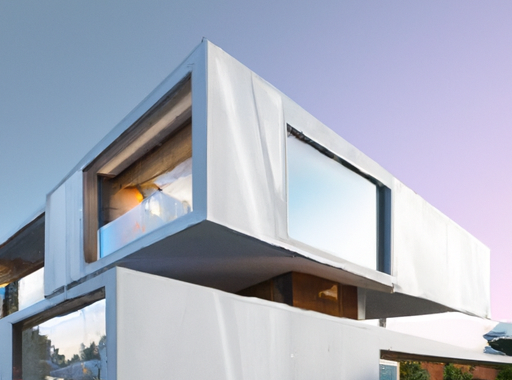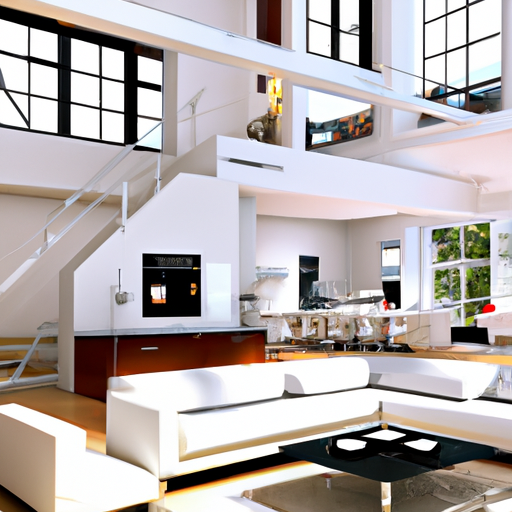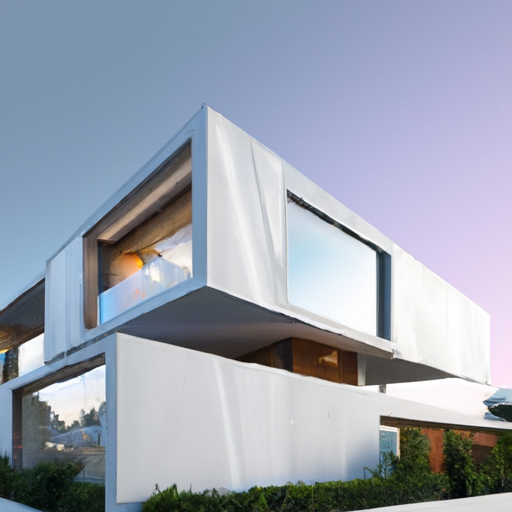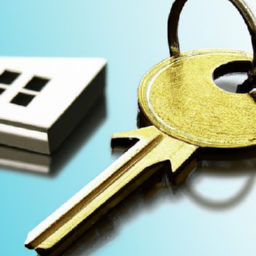Get all the information you need about the "Clear to Close" process in the real estate industry. Understand its importance, the required documentation, common delays, and tips to expedite the process.
What is a Contemporary Home?

In today’s fast-paced and ever-evolving world, finding a home that combines modern design with functionality is paramount. Look no further than “Contemporary Home”, a revolutionary product that redefines the meaning of style and comfort. Designed to seamlessly blend contemporary aesthetics with practicality, this innovative housing solution promises to be the epitome of modern living. With clean lines, minimalist architecture, and a focus on maximizing space, “Contemporary Home” sets the stage for a lifestyle that is both luxurious and practical.
Design Elements
Contemporary homes are known for their clean lines and minimalist aesthetics. The design focuses on simplicity and functionality, with an emphasis on creating a clutter-free living space. Clean lines can be seen in the architecture of the home, as well as in the furniture and decor chosen for the interior. This creates a sense of order and tranquility in the space, making it feel calm and inviting.
Minimalist aesthetics are another key design element in contemporary homes. The goal is to create an uncluttered and visually pleasing environment. This is achieved by choosing furniture and decor pieces that are sleek and simple in design. Neutral color palettes are often used to enhance the minimalist aesthetic, allowing the focus to be on the form and shape of the objects in the space.
Open floor plans are a common feature in contemporary homes. This design concept emphasizes the flow of space, creating a sense of openness and connectivity throughout the home. Walls are minimized or eliminated to create a seamless transition between different areas. This not only makes the home feel more spacious, but also encourages social interaction and a sense of togetherness among family members and guests.
Large windows are an essential design element in contemporary homes. They not only allow for ample natural light to enter the space, but also provide stunning views of the outside environment. The use of large windows brings the outdoors inside, creating a connection with nature and enhancing the overall atmosphere of the home. Additionally, natural light has numerous benefits, such as improving mood, reducing energy costs, and promoting an overall sense of well-being.
Natural materials are often incorporated into the design of contemporary homes. This includes materials such as wood, stone, and glass. These natural elements add warmth and texture to the space, creating a harmonious blend between the interior and exterior environments. Additionally, the use of natural materials promotes sustainability and a closer connection with nature, aligning with the environmental consciousness that many contemporary homeowners strive for.
Innovative Technology
Contemporary homes are not just visually appealing, but also strive to incorporate innovative technology to enhance the living experience. These technological advancements not only offer convenience, but also contribute to energy efficiency, security, and overall sustainability.
Home automation is a standout feature in contemporary homes. It allows homeowners to control various aspects of their home, such as lighting, temperature, and security, with the touch of a button or through voice commands. This technology simplifies daily tasks and creates a more comfortable and customizable living environment.
Smart appliances are another innovative technology commonly found in contemporary homes. These appliances are designed to be interconnected and communicate with each other, allowing for seamless integration and automation. For example, a smart refrigerator can send a notification to your phone when you’re running low on groceries, or a smart oven can be preheated remotely before you even step foot in the kitchen. These appliances not only save time and energy, but also contribute to a more efficient and sustainable lifestyle.
Energy efficiency is a key focus in contemporary home design. Integration of energy-saving technologies, such as solar panels and energy-efficient appliances, helps reduce the home’s carbon footprint and save on energy costs. Solar power, in particular, is a popular choice for contemporary homeowners looking to harness renewable energy and reduce their reliance on traditional power sources. These advancements in energy efficiency not only benefit the environment, but also contribute to long-term cost savings for homeowners.
Security systems have also seen significant advancements in contemporary home design. From smart locks and surveillance cameras to motion sensors and remote monitoring, these systems offer homeowners peace of mind and enhanced safety measures. The integration of modern security technology ensures that contemporary homes are not only aesthetically pleasing, but also provide a secure living environment for residents and their belongings.
Sustainability
As sustainability becomes an increasingly important aspect of modern living, contemporary homes strive to incorporate eco-friendly features and practices. From harnessing solar power to conserving water and using recycled materials, sustainability is at the forefront of contemporary home design.
Solar power is a popular choice for homeowners looking to reduce their reliance on traditional energy sources and lower their carbon footprint. By installing solar panels on the roof, contemporary homes are able to generate clean and renewable energy. This not only reduces the home’s environmental impact, but also lowers energy costs over the long term.
Water conservation is another important aspect of sustainability in contemporary homes. From low-flow faucets and toilets to rainwater harvesting systems, there are many ways to minimize water usage. These practices not only contribute to water conservation efforts, but also result in cost savings for homeowners.
The use of recycled materials is gaining popularity in contemporary home design. From reclaimed wood flooring to countertops made from recycled glass, homeowners have a wide range of options to choose from. Incorporating recycled materials not only reduces waste and promotes resource conservation, but also adds unique and interesting elements to the home’s design.
Green roofing is another sustainable feature found in contemporary homes. This type of roof is covered with living plants, providing insulation, absorbing rainwater, and reducing the urban heat island effect. Green roofs not only contribute to a more sustainable living environment, but also create beautiful outdoor spaces that blend seamlessly with the surrounding natural landscape.
Flexible Spaces
Contemporary homes prioritize flexibility and versatility, offering homeowners the ability to adapt their living spaces to suit their changing needs. This is achieved through the use of multipurpose rooms, convertible furniture, open shelving, and hidden storage solutions.
Multipurpose rooms are a key feature in contemporary homes, allowing homeowners to maximize the functionality of their space. These rooms can serve multiple functions, such as a home office that transforms into a guest bedroom, or a playroom that doubles as a study area. By having rooms that can adapt to different needs, homeowners have the flexibility to make the most of their space without sacrificing style or convenience.
Convertible furniture is another innovative solution for creating flexible spaces. From sofa beds and folding dining tables to modular shelving units and extendable desks, there are countless options to choose from. These pieces of furniture can easily transform from one function to another, allowing homeowners to make the most of limited space while still maintaining a sleek and modern aesthetic.
Open shelving is a popular choice for contemporary homes, offering both functionality and aesthetics. By displaying items on open shelves, homeowners can showcase their personal style and create visual interest in the space. Open shelving also allows for easy access to frequently used items, making it a practical storage solution.
Hidden storage is a must-have feature in contemporary homes, as it allows for a clutter-free and visually pleasing environment. From built-in storage units and hidden closets to concealed compartments and under-bed storage, there are many options to choose from. These hidden storage solutions keep the living space organized and free from clutter, while also maximizing the use of available space.
Integration with Nature
Contemporary homes strive to create a strong connection between the interior and exterior environments, blurring the boundaries between indoor and outdoor living. This is achieved through the use of biophilic design, indoor gardens, outdoor living spaces, and ample natural light.
Biophilic design is an important aspect of contemporary home design, as it seeks to incorporate elements of nature into the living space. This can include the use of natural materials, such as wood and stone, as well as incorporating plants and greenery into the interior design. By creating a connection with nature, biophilic design enhances the overall well-being and comfort of the occupants.
Indoor gardens are a popular feature in contemporary homes, bringing the beauty of nature indoors. From small potted plants to vertical gardens and living walls, homeowners have many options to choose from. Indoor gardens not only add visual interest and a touch of greenery to the space, but also improve air quality and create a calming atmosphere.
Outdoor living spaces are an essential aspect of contemporary home design, allowing homeowners to fully enjoy their surroundings. This can include spacious terraces and patios for entertaining guests, as well as cozy outdoor seating areas for relaxation. By creating comfortable and inviting outdoor living spaces, contemporary homes extend the usable living area and provide a seamless transition from indoor to outdoor living.
Ample natural light is a fundamental aspect of contemporary home design. Large windows, as previously mentioned, allow for the maximum amount of natural light to enter the space. This not only creates a bright and welcoming atmosphere, but also reduces the need for artificial lighting during daylight hours. Natural light has numerous benefits, including boosting mood, improving productivity, and enhancing overall well-being.
Color Palette
The color palette in contemporary homes tends to lean towards neutral tones with the addition of bold accents to create visual interest. Monochromatic schemes and contrasting combinations are also commonly used to achieve a cohesive and aesthetically pleasing look.
Neutral tones, such as whites, grays, and beiges, dominate the color palette of contemporary homes. These neutral colors create a calm and serene atmosphere, allowing for other elements of the design to stand out. Additionally, neutral tones contribute to a timeless and versatile aesthetic, making it easy to update the space with different decor and accents as desired.
Bold accents are often used to add pops of color and visual interest to contemporary homes. This can be achieved through the use of vibrant throw pillows, artwork, rugs, or accent furniture. By incorporating bold accents in strategic areas of the space, homeowners can create focal points and add personality to the overall design.
Monochromatic schemes are a popular choice in contemporary home design. This involves using varying shades of a single color throughout the space. Monochromatic schemes create a cohesive and harmonious look, allowing for a seamless flow from one area of the home to another. This approach can make a bold statement when using a vibrant color, or create a tranquil and soothing atmosphere when using shades of a neutral color.
Contrasting combinations are also commonly used in contemporary homes to create visual interest. This involves pairing colors that are opposites on the color wheel, such as black and white or blue and orange. The contrast between these colors adds depth and excitement to the space, creating a dynamic and visually striking environment.

Art and Decor
Contemporary homes often feature art and decor that reflect the clean lines and minimalist aesthetics of the overall design. Abstract art, sculptural pieces, minimalist decor, and unique installations are commonly found in contemporary spaces.
Abstract art is a popular choice for contemporary homes, as it adds a sense of creativity and visual interest to the space. Abstract art can be bold and vibrant or subtle and calming, depending on the desired atmosphere of the room. By incorporating abstract art into the design, homeowners can express their personal style and create a focal point in the space.
Sculptural pieces are another popular choice in contemporary home decor. Whether it’s a large-scale sculpture or a smaller sculptural accent, these pieces can add a sense of dimension and uniqueness to the space. Sculptural pieces can be made from a variety of materials, such as metal, wood, or stone, and can serve as functional or purely decorative elements.
Minimalist decor is a natural choice for contemporary homes. The goal is to keep the decor simple and uncluttered, allowing the architecture and design of the space to take center stage. This can include minimalist vases, decorative objects, and furniture with clean lines and minimal embellishments. By choosing minimalist decor, homeowners can create a sense of calm and order in the space, while still adding subtle touches of personality and style.
Unique installations are often incorporated into contemporary home design to create a wow factor and add a sense of artistry to the space. This can include large-scale installations, such as a statement lighting fixture or a dramatic piece of artwork, or smaller installations, such as a unique wall treatment or a sculptural staircase. These installations serve as conversation starters and give the space a distinct and memorable character.
Integration of Technology
Contemporary homes seamlessly integrate technology into the design, enhancing the functionality and convenience of the living space. Smart home systems, audio and visual installations, wireless charging solutions, and home offices are key aspects of technology integration in contemporary homes.
Smart home systems allow homeowners to control various aspects of their home, from lighting and temperature to security and entertainment, through a centralized system. This integration of technology offers convenience and customization, allowing homeowners to create a living environment that suits their preferences and lifestyle. Whether it’s adjusting the lighting to create a specific ambiance or setting the thermostat remotely, smart home systems make daily tasks more efficient and enjoyable.
Audio and visual installations are another technological feature commonly found in contemporary homes. From built-in speakers throughout the house to state-of-the-art home theater systems, homeowners can create a seamless audio and visual experience. These installations not only elevate the entertainment aspect of the home, but also enhance the overall atmosphere and enjoyment of the space.
Wireless charging solutions are becoming increasingly popular in contemporary homes. By integrating wireless charging pads into furniture or installing charging stations throughout the house, homeowners can conveniently charge their devices without the clutter of cords and cables. This technology allows for easy and efficient charging, ensuring that devices are always ready for use.
Home offices have become a necessity in today’s digital age, and contemporary homes have adapted to meet this need. Whether it’s a dedicated room or a small workspace tucked away in a corner, home offices in contemporary homes are designed to be functional and aesthetically pleasing. With the integration of technology, such as ergonomic furniture and connectivity solutions, working from home becomes a seamless and productive experience.

Efficient Use of Space
Efficiency is a key aspect of contemporary home design, with a focus on making the most of limited space. Built-in storage, multipurpose furniture, compact appliances, and hidden features are all elements used to achieve efficient use of space.
Built-in storage is a hallmark of contemporary homes. By incorporating storage solutions into the architecture and design of the space, homeowners can maximize storage while minimizing visual clutter. This can include built-in cabinets, shelving units, and closets that seamlessly integrate with the overall design. Built-in storage allows for efficient organization and ensures that every inch of space is utilized effectively.
Multipurpose furniture is a clever solution for making the most of limited space in contemporary homes. This type of furniture serves multiple functions, eliminating the need for separate pieces and optimizing space. Examples of multipurpose furniture include sofa beds, dining tables with built-in storage, and ottomans that double as coffee tables. By choosing multipurpose furniture, homeowners can create a flexible and adaptable living environment without sacrificing style or comfort.
Compact appliances are essential in contemporary home design, particularly in smaller spaces. These appliances are designed to be space-saving without compromising functionality. From mini-fridges and slimline dishwashers to washer-dryer combos, there are many options available for homeowners looking to maximize space without sacrificing convenience.
Hidden features are a clever way to make the most of limited space while maintaining a clean and uncluttered aesthetic. This can include hidden storage compartments behind walls or under stairs, as well as foldable furniture that can be tucked away when not in use. By incorporating hidden features into the design, homeowners can create a space that is both efficient and visually pleasing.
Outdoor Living
Contemporary homes embrace outdoor living, creating spaces that seamlessly blend with the natural surroundings. Terraces and patios, swimming pools, outdoor kitchens, and landscaping are all important aspects of outdoor living in contemporary home design.
Terraces and patios are popular outdoor living spaces in contemporary homes. These areas provide a seamless transition from indoor to outdoor living, allowing homeowners to enjoy the fresh air and take in the surrounding views. Whether it’s a small balcony or a spacious terrace, these outdoor spaces can be designed for relaxation, entertaining, or dining.
Swimming pools are a common feature in contemporary homes, offering not only a place to cool off and exercise, but also a visual focal point in the outdoor living area. Contemporary pool designs often feature clean lines and minimalist aesthetics, complementing the overall architectural style of the home. Whether it’s a sleek lap pool or a luxurious infinity pool, a swimming pool adds a touch of luxury and enhances the outdoor living experience.
Outdoor kitchens are a popular choice for homeowners who enjoy entertaining and cooking outdoors. These kitchens typically feature a grill or stove, countertops for food preparation, and storage for cooking utensils and supplies. With the addition of seating and dining areas, outdoor kitchens create a complete outdoor entertaining space that seamlessly integrates with the rest of the home.
Landscaping plays a crucial role in outdoor living in contemporary homes. From lush gardens to carefully curated landscapes, these outdoor spaces enhance the overall aesthetic and create a connection with nature. In contemporary landscaping, simplicity and minimalism are key, with an emphasis on clean lines and natural materials. The landscaping should complement the architecture of the home and create a cohesive and visually pleasing environment.
In conclusion, contemporary homes are characterized by their clean lines, minimalist aesthetics, and focus on functionality. These homes seamlessly integrate innovative technology, sustainability practices, flexible spaces, and a strong connection with nature. Through the use of a neutral color palette, art and decor that aligns with the overall design, integration of technology, efficient use of space, and thoughtfully designed outdoor living areas, contemporary homes offer a modern and stylish living experience.


